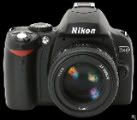After discussing about the term APERTURE, we'll be tackling about DEPTH OF FIELD.
DEPTH OF FIELD
Depth of field is the term used to specify that area of the photo that is in sharp focus. There's usually a space in front of and behind your subject that's in focus. The aperture can control this. As discussed in this article, wide apertures (f2, f2.8) let in a lot of light but have a narrow depth of field. In other words, the area of sharpness is very narrow from front to back. In contrast, if you use a very small opening (aperture) such as f22, you'll find that the area of depth of sharpness is much greater. You may be able to get an entire length of a bug in the photo and have it sharp from front to rear. But in a case such as this, you're allowing very little light into the film, so you must use a slower shutter speed to allow enough light to expose properly.
In practice, for instance, if you were taking a photo of a statue in a lower aperture setting (e.g. f2, f2.8), the front of the statue may be sharp but the rear of it in the photo may be fuzzy. Similarly, when taking photos of animals in a low aperture setting, the front of the long face of an animal might be in sharp focus, while the back part would be difficult to make out. Because you're allowing plenty of light in through the wide opening, you can take the shot at fast speeds so you won't overexpose. What this implies is that there is a significant relationship between aperture, shutter speed and the depth of sharpness of a certain picture. The lower the aperture setting, the higher the shutter speed, and less of the picture are in sharp focus. In contrast, a higher aperture requires more light to come in, thus resulting to a slower shutter speed but a greater deal of sharpness throughout the picture.
That's all for DEPTH OF FIELD, next time, we'll tackle on LENS FOCAL LENGTH.












0 comments
Post a Comment